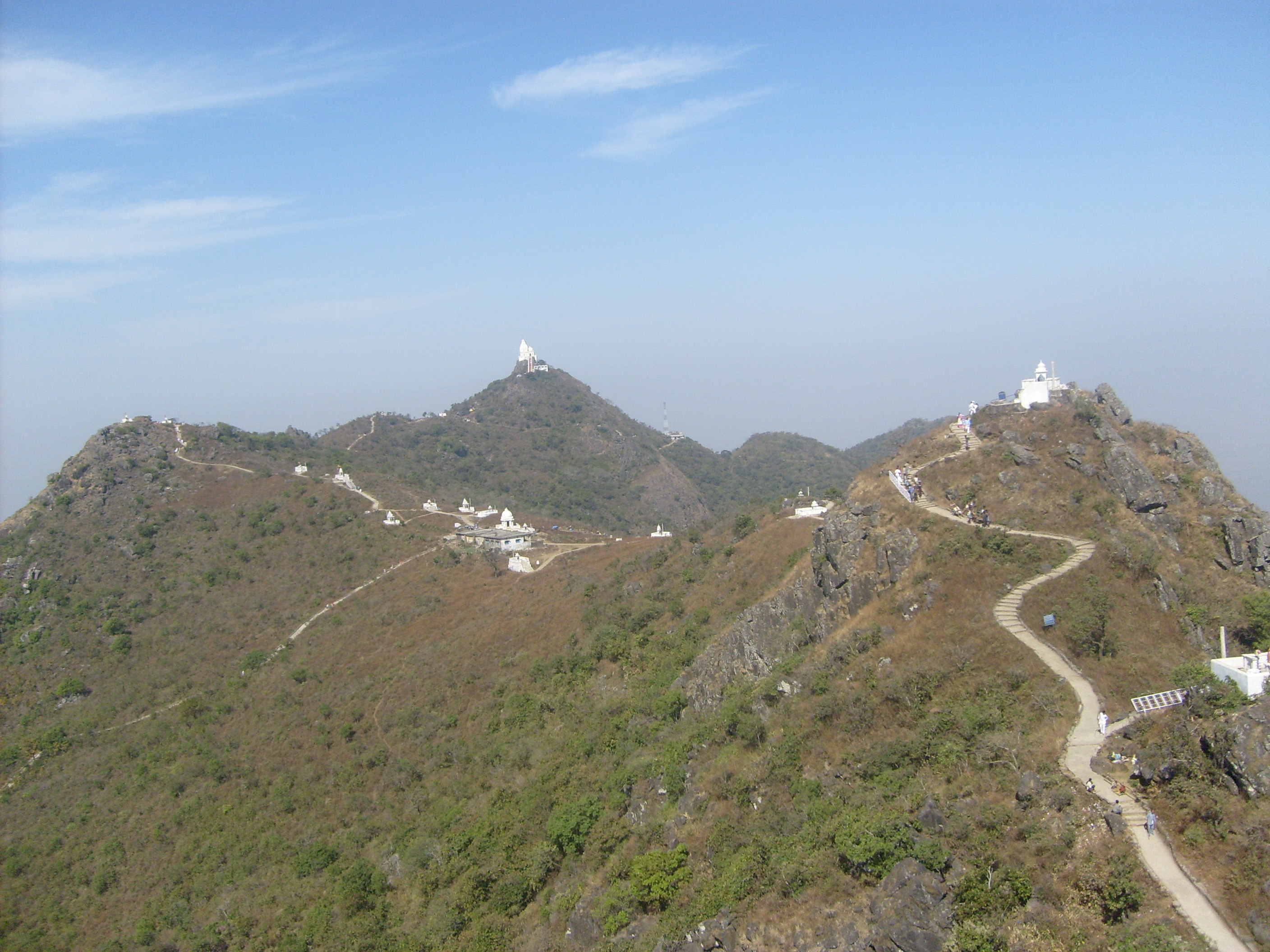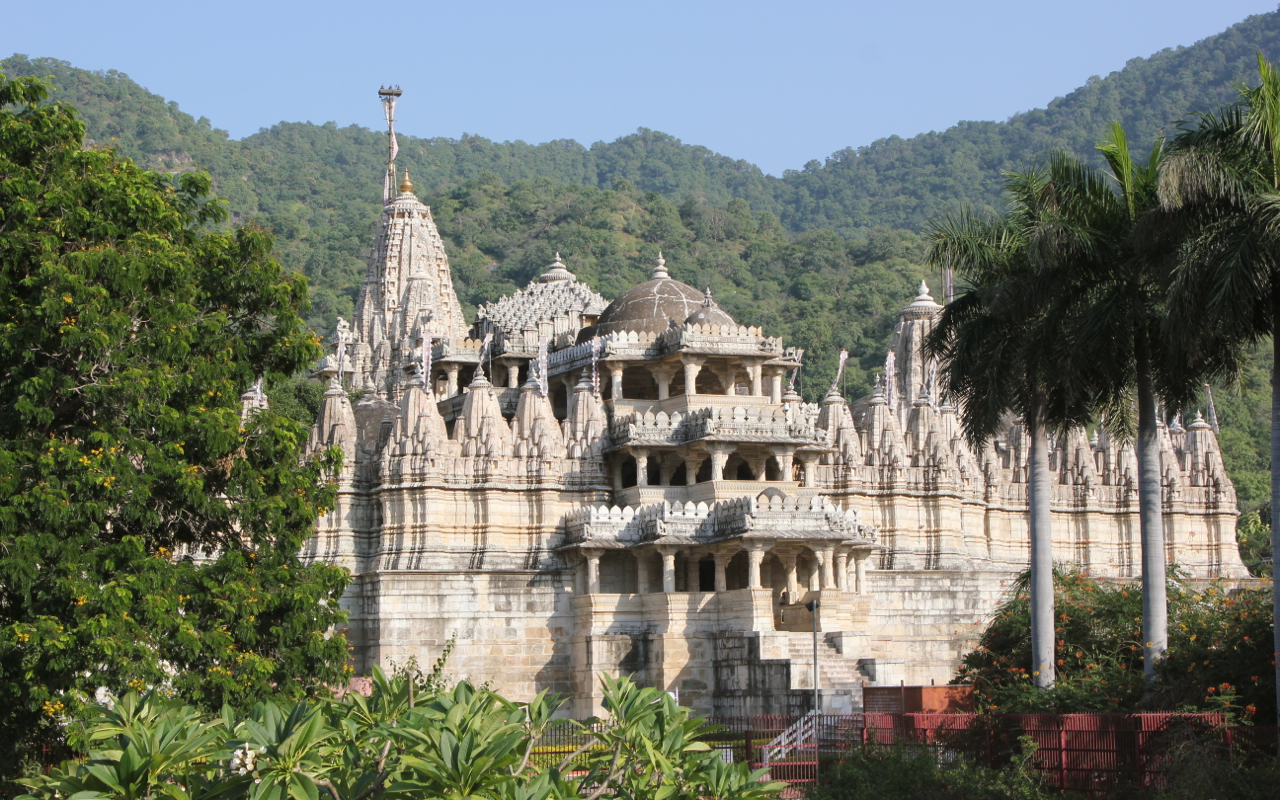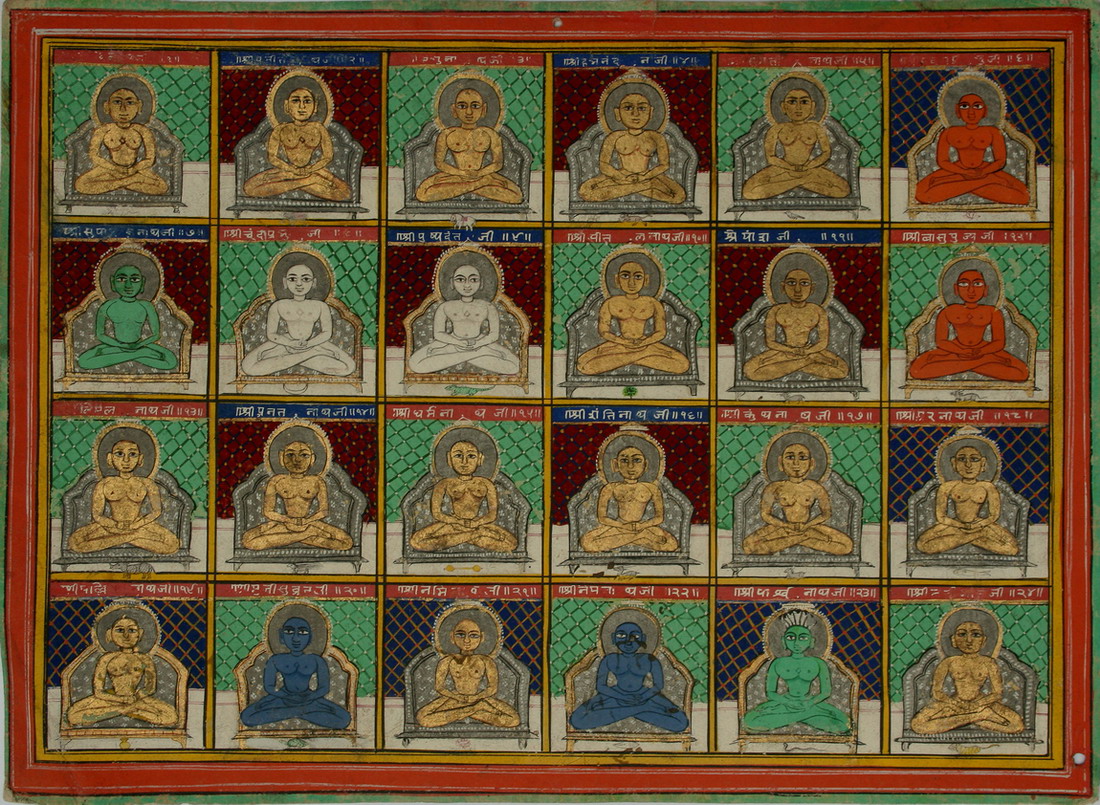|
Shikharji
Shikharji (), also known as Sammet or Sammed Shikharji, is one of the holiest pilgrimage sites for Jains, in Giridih district, Jharkhand. It is located on Parasnath hill, the highest mountain in the state of Jharkhand. It is the most important Tirtha (Jainism), Jain Tirtha (pilgrimage site), for it is the place where twenty of the twenty-four Jain tirthankaras (supreme preachers of Dharma) along with many other monks attained Moksha (Jainism), Moksha. It is one of the seven principal pilgrimage destinations along with Girnar, Pawapuri, Champapuri, Dilwara, Palitana and Kailash, Ashtapad Kailash. Etymology ''Shikharji'' means the "venerable peak". The site is also called Sammed Śikhar "peak of concentration" because it is a place where twenty of twenty-four Tirthankaras attained Moksha through meditation. The word "Parasnath" is derived from Parshwanatha, Lord Parshvanatha, the twenty-third Jain Tirthankara, who was one of those who attained Moksha (Jainism), Moksha at the sit ... [...More Info...] [...Related Items...] OR: [Wikipedia] [Google] [Baidu] |
Parasnath
Parasnath Hill (also Sammet Shikhar, Marang Buru) is a mountain peak in the Parasnath hill range. It is located towards the eastern end of the Chota Nagpur Plateau in the Giridih district (Hazaribagh district in British India) of the Indian state of Jharkhand, India. The hill is named after Parshvanatha, the 23rd Jain Tirthankara who got salvation here. In this connection, there is Jain pilgrimage Shikharji on the top of hill. The hill is also known as Sammet Shikhar (, the supreme deity) by other autochthonous of the region in religious contexts. History Historically parasnath or sammed shikharji is an ancient Jain pilgrimage site it is a place where the 23rd tirthankara Parshwanath(also known as Parasnath) attained salvation here in 772 BCE. It is noteworthy that the name of the Parasnath hill derived from the Jain Tirthankar Parshvanath who is also known as Parasnath or Parsva who attained salvation here during the 8th century BCE. After preaching for 70 years, Pars ... [...More Info...] [...Related Items...] OR: [Wikipedia] [Google] [Baidu] |
Giridih
Giridih is headquarters of the Giridih district of Jharkhand state, India. The city of Giridih is known for its industrial and health sectors, as well as its scenery. Giridih houses the Giridih Coalfield which is one of the oldest coalfields to be worked in India. Giridih is one of the six Data Processing Centres of National Sample Survey Organisation#Data Processing Division (DPD), Data Processing Division (DPD) of National Sample Survey Organisation, National Sample Survey Office (NSSO). Before 1972, Giridih was part of Hazaribagh district. Etymology The literal meaning of ''Giridih'' is the ''land of hills and hillocks'' – ''giri'', a Sanskrit word, means ''hills'' and ''dih'', another word of the local Khortha dialect, means ''land of''. History Giridih district was a part of Kharagdiha estate until the late 18th century. During the British Raj Giridih became a part of Jungle Terry. After Kol Uprising in 1831, the parganas of Ramgarh, Kharagdiha, Kendi and Kunda became p ... [...More Info...] [...Related Items...] OR: [Wikipedia] [Google] [Baidu] |
Jainism
Jainism ( ), also known as Jain Dharma, is an Indian religions, Indian religion whose three main pillars are nonviolence (), asceticism (), and a rejection of all simplistic and one-sided views of truth and reality (). Jainism traces its spiritual ideas and history through the succession of twenty-four , supreme preachers of ''dharma''. The first in the current time cycle is Rishabhadeva, who tradition holds lived millions of years ago; the 23rd is Parshvanatha, traditionally dated to the 9th century Common Era, BCE; and the 24th is Mahāvīra, Mahavira, who lived . Jainism is considered an eternal ''dharma'' with the guiding every time cycle of the Jain cosmology, cosmology. Central to understanding Jain philosophy is the concept of ''bhedavijñāna'', or the clear distinction in the nature of the soul and non-soul entities. This principle underscores the innate purity and potential for liberation within every Jīva (Jainism), soul, distinct from the physical and menta ... [...More Info...] [...Related Items...] OR: [Wikipedia] [Google] [Baidu] |
Jains
Jainism ( ), also known as Jain Dharma, is an Indian religion whose three main pillars are nonviolence (), asceticism (), and a rejection of all simplistic and one-sided views of truth and reality (). Jainism traces its spiritual ideas and history through the succession of twenty-four , supreme preachers of ''dharma''. The first in the current time cycle is Rishabhadeva, who tradition holds lived millions of years ago; the 23rd is Parshvanatha, traditionally dated to the 9th century BCE; and the 24th is Mahavira, who lived . Jainism is considered an eternal ''dharma'' with the guiding every time cycle of the cosmology. Central to understanding Jain philosophy is the concept of ''bhedavijñāna'', or the clear distinction in the nature of the soul and non-soul entities. This principle underscores the innate purity and potential for liberation within every soul, distinct from the physical and mental elements that bind it to the cycle of birth and rebirth. Recognizing a ... [...More Info...] [...Related Items...] OR: [Wikipedia] [Google] [Baidu] |
Jharkhand
Jharkhand (; ) is a States and union territories of India, state in East India, eastern India. The state shares its border with the states of West Bengal to the east, Chhattisgarh to the west, Uttar Pradesh to the northwest, Bihar to the north and Odisha to the south. It is the List of states and territories of India by area, 15th largest state by area, and the List of states and union territories of India by population, 14th largest by population. Hindi is the official language of the state. The city of Ranchi is its capital and Dumka its sub-capital. The state is known for its waterfalls, hills and holy places; Baidyanath Temple, Baidyanath Dham, Parasnath, Maa Dewri Temple, Dewri and Rajrappa are major religious sites. Jharkhand is primarily rural, with about 24% of its population living in cities as of 2011. Jharkhand suffers from what is sometimes termed a resource curse: it accounts for more than 40% of Mining in India, India's mineral production but 39.1% of its populati ... [...More Info...] [...Related Items...] OR: [Wikipedia] [Google] [Baidu] |
Giridih District
Giridih district is one of the twenty-four districts of Jharkhand state, India, and Giridih is the administrative headquarters of this district. As of 2011 it is the third most populous district of Jharkhand (out of 24), after Ranchi and Dhanbad. History Giridh district was a part of Kharagdiha estate till late 18th century. During the British Raj Giridih became a part of Jungle Terry. After Kol Uprising in 1831, the parganas of Ramgarh, Kharagdiha, Kendi and Kunda became parts of the South-West Frontier Agency and were formed into a division named Hazaribag as the administrative headquarters. The Kharagdiha Rajas were settled as Rajas of Raj Dhanwar in 1809, and the Kharagdiha gadis were separately settled as zamindari estates. Some of the notable Kharagdiha Zamindari estates were Koderma, Gadi Palganj, Ledo Gadi, Gande Gadi, Ghoranji Gadi and Gadi Sirsia. Giridih district was created on 6 December 1972 by carving some parts of Hazaribagh district. In 1999 part of it becam ... [...More Info...] [...Related Items...] OR: [Wikipedia] [Google] [Baidu] |
Tirtha (Jainism)
In Jainism, a ''tīrtha'' ( " ford, a shallow part of a body of water that may be easily crossed") is used to refer both to pilgrimage sites as well as to the four sections of the ''sangha''. A ''tirtha'' provides the inspiration to enable one to cross over from worldly engagement to the side of ''moksha''. Jain ''tirthas'' are located throughout India. Often a ''tirtha'' has a number of temples as well as residences (dharmashala) for the pilgrims and wandering monks and scholars. Types ''Tirtha'' sites include: * ''Siddhakshetra''s or site of ''moksha'' liberation of an '' arihant'' (''kevalin'') or Tirthankaras like Ashtapada Hill, Shikharji, Girnar, Pawapuri, Palitana, Mangi-Tungi and Champapuri (capital of Anga) * ''Atishayakshetra''s where divine events have occurred like Mahavirji, Rishabhdeo, Kundalpur, Aharji etc. * ''Puranakshetra''s associated with lives of great men like Ayodhya, Vidisha, Hastinapur, and Rajgir * ''Gyanakshetra'': associated with famous '' ... [...More Info...] [...Related Items...] OR: [Wikipedia] [Google] [Baidu] |
Dilwara Temples
The Dilwara Temples or Delvada Temples are a group of Śvētāmbara Jain temples located about kilometres from the Mount Abu settlement in Sirohi District, Rajasthan's only hill station. The earliest were built by Vimal Shah , a Jain minister of Solanki king of Gurjaratra , Bhima I and additions to the temples were made by Vastupala, Jain minister of Vaghelas of Gurjaratra. They date between the 11th and 16th centuries, forming some of the most famous monuments in the style of Solanki architecture, famous for their use of a very pure white marble and intricate marble carvings. They are managed by Seth Shri Kalyanji Anandji Pedhi, Sirohi and are a pilgrimage place for Jains, and a significant general tourist attraction. The Dilwara temples are regarded as the most impressive among Jain temples in Rajasthan. Architecture The five Dilwara temples are among the most famous Jain temples. The Vimal Vasahi is much the earliest, constructed by 1031, with the Luna Vasa ... [...More Info...] [...Related Items...] OR: [Wikipedia] [Google] [Baidu] |
Dilwara
The Dilwara Temples or Delvada Temples are a group of Śvētāmbara Jain temples located about kilometres from the Mount Abu settlement in Sirohi District, Rajasthan's only hill station. The earliest were built by Vimal Shah , a Jain minister of Solanki king of Gurjaratra , Bhima I and additions to the temples were made by Vastupala, Jain minister of Vaghelas of Gurjaratra. They date between the 11th and 16th centuries, forming some of the most famous monuments in the style of Solanki architecture, famous for their use of a very pure white marble and intricate marble carvings. They are managed by Seth Shri Kalyanji Anandji Pedhi, Sirohi and are a pilgrimage place for Jains, and a significant general tourist attraction. The Dilwara temples are regarded as the most impressive among Jain temples in Rajasthan. Architecture The five Dilwara temples are among the most famous Jain temples. The Vimal Vasahi is much the earliest, constructed by 1031, with the Luna Vasahi b ... [...More Info...] [...Related Items...] OR: [Wikipedia] [Google] [Baidu] |
Girnar
Girnar is an ancient hill in Junagadh, Gujarat, India. It is one of the holiest pilgrimages of Jains, where the 22nd Tirthankara, Tirthaṅkar, Lord Neminath attained omniscience, and later nirvana at its highest peak (''Neminath Shikhar''), along with other five hundred and thirty three kevala jnana, enlightened sages. This is well described in ancient texts such as Kalpa Sūtra written by acharya Bhadrabāhu and Uttaradhyayana, Shri Uttaradhyayana Sutra by Sudharmaswami, Arya Sudharmaswami. It is administered by the Junagadh Municipal Corporation. Geology Mount Girnar is a major Intrusive rock, igneous plutonic complex which intruded into the basalts towards the close of the Deccan Trap period. The rock types identified in this complex are gabbros (tholeiitic and alkalic), diorites, lamprophyres, Syenite, alkali-syenites and rhyolites. The parent gabbroic magma is shown to have given rise in sequence to diorites, lamprophyres and alkali-syenites. The rhyolite, though previo ... [...More Info...] [...Related Items...] OR: [Wikipedia] [Google] [Baidu] |
Tirthankara
In Jainism, a ''Tirthankara'' (; ) is a saviour and supreme preacher of the ''Dharma (Jainism), dharma'' (righteous path). The word ''tirthankara'' signifies the founder of a ''Tirtha (Jainism), tirtha'', a fordable passage across ''Saṃsāra (Jainism), saṃsāra'', the sea of interminable birth and death. According to Jains, ''tirthankaras'' are the supreme preachers of ''dharma'', who have conquered ''saṃsāra'' on their own and made a path for others to follow. After understanding the true nature of the self or soul, the ''Tīrthaṅkara'' attains ''kevala jnana'' (omniscience). A Tirthankara provides a bridge for others to follow them from ''saṃsāra'' to ''moksha'' (liberation). In Jain cosmology, the wheel of time is divided into two halves, Utsarpiṇī', the ascending time cycle, and ''avasarpiṇī'', the descending time cycle (said to be current now). In each half of the cycle, exactly 24 ''tirthankaras'' grace this part of the universe. There have been infini ... [...More Info...] [...Related Items...] OR: [Wikipedia] [Google] [Baidu] |








